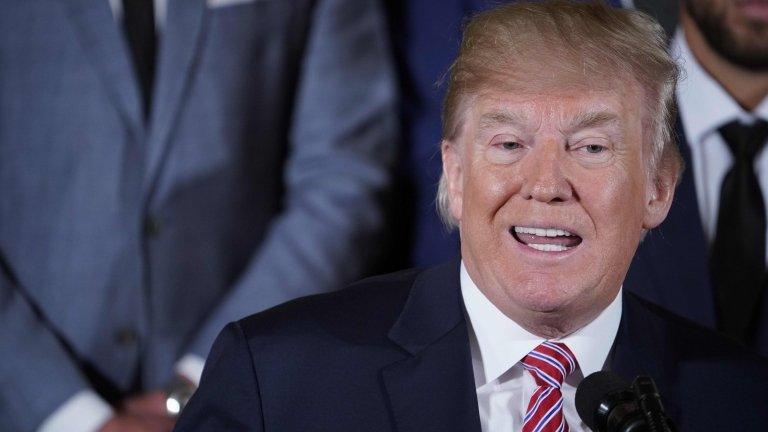March For Our Lives: Huge gun-control rallies sweep US
- Published
Emma Gonzalez demonstrated the power of silence during her speech
Hundreds of thousands of protesters have taken to the streets across the US to call for tighter gun control.
The March For Our Lives movement arose after 17 deaths in a school shooting in Parkland, Florida, last month.
Student leader and Parkland survivor Emma Gonzalez gave a powerful speech at the main Washington DC event.
After listing the names of the victims, she stayed silent on stage for six minutes, 20 seconds - the time it took for them to be killed.
'Our message to the world is...'
More than 800 sister protests were planned nationwide and abroad, with solidarity events taking place in Edinburgh, London, Geneva, Sydney and Tokyo.
As events began to draw to a close on the US east coast, they continued on the west, including a major demonstration in Los Angeles.
What happened in Washington?
Huge crowds - including a high proportion of young people and children - gathered along Pennsylvania Avenue, with placards reading "Protect kids not guns" and "Am I next?".
Singers Ariana Grande, Miley Cyrus and Lin-Manuel Miranda, the man behind hit musical Hamilton, performed on a stage erected in front of the US Capitol building.
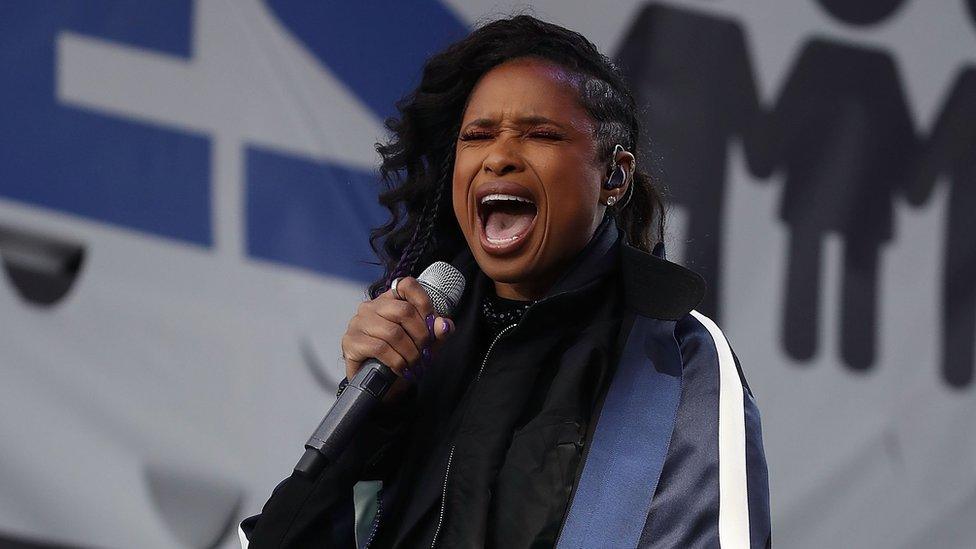
Jennifer Hudson - who has lost her mother, brother and nephew to gun violence - sang Bob Dylan's The Times They Are a-Changin
The music was interspersed with speeches from impassioned youth leaders.
"We will continue to fight for our dead friends," said speaker Delaney Tarr, a Parkland student.
"He pulls out a silver pistol and points it in my face" - student Mya Middleton speaks of her chilling encounter with a gunman
Some came from children who are just 11 years old, including Naomi Wadler, from Virginia, who spoke "to represent African-American girls whose stories don't make the front page of every national newspaper".

'My lost soulmate'
By Marianna Brady, BBC News, Washington
The crowds started to gather in the early hours of the morning outside the US Capitol. Chants for "no more NRA" and "no more guns" erupt every few minutes at random.
"He was my soulmate," said Victoria Gonzalez, looking down at a sign of her boyfriend Joaquin Oliver.
Valentine's Day - 14 February - started off as a great day for Victoria. "Joaquin and I exchanged gifts in the morning and he walked me to class. I was so happy."
Later that day, she would learn that Joaquin was one of 17 people shot and killed at Marjory Stoneman Douglas school.
"It wasn't real," she said, standing in a crowd of several thousand ahead of the march.
"It's taken a while for it to sink in. I'm here today so no-one ever has to face this again. It gives me a lot of hope seeing how many people are out here supporting us. It feels like the whole entire world is on our side," Victoria said.

How did the movement start?
The 14 February massacre at Marjory Stoneman Douglas High School in Parkland was one of a long line of school shootings in the US but the worst since Sandy Hook in 2012, when 26 people were killed.
Campaigning by Parkland students gained widespread support, with Ms Gonzalez one of the most outspoken figures, gaining more than a million Twitter followers in a matter of weeks.
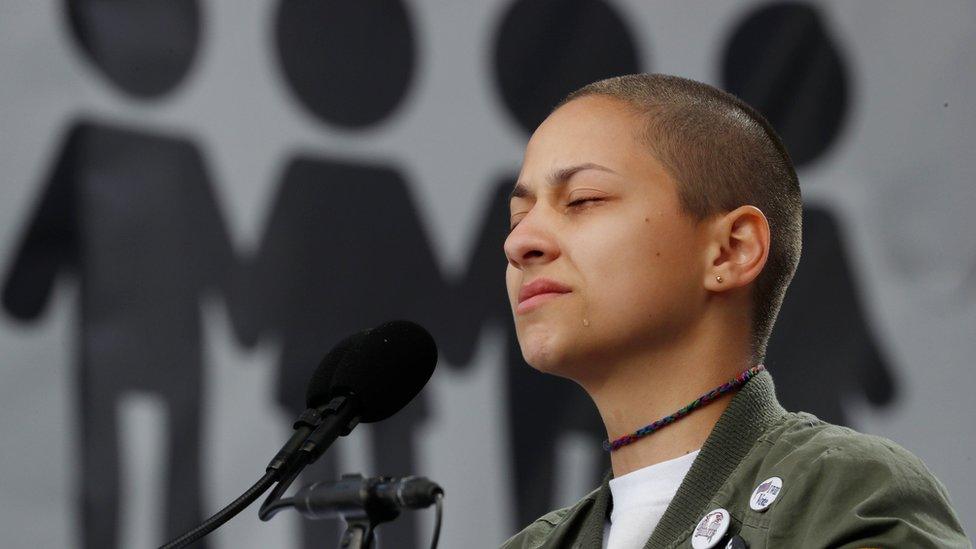
A tearful Emma Gonzalez during her minutes of silence
Survivors of other shootings have also joined the movement, alongside relatives of gun violence victims and anyone moved by their stories.
The students staged a nationwide school walk-out earlier this month.
They want to seize on public outrage to convince US politicians to take decisive action such as banning the sale of assault weapons.
On Thursday, 16-year-old Jaelynn Willey died, after being shot in the head by a classmate in Maryland earlier in the week. A second student was injured in the attack.
How much support do they have?
Although the turnout during Saturday's marches has been huge, the issue still divides Americans.
The right to bear arms is protected under the second amendment of the US constitution and the National Rifle Association (NRA) gun lobby remains highly influential.
On Saturday afternoon, the White House released a statement praising the "many courageous young Americans exercising their First Amendment rights today".
It outlined steps the government is taking to tackle gun violence:
Banning bump stocks (devices which allow semi-automatic rifles to fire like machine-guns)
Enacting the STOP School Violence Act, which seeks to improve school security
Increasing training for students, staff and local law enforcement.
Improving criminal background records so gun buyers are properly vetted before making a purchase
Some protesters were disappointed that President Donald Trump, who is at his Mar-a-Lago resort in Florida for the weekend, did not personally tweet a message of support during the protests.
How did other cities join in?
Sandy Hook survivors march with Parkland
There were protests all across the nation, from New York and Los Angeles to Houston and Anchorage, Alaska.
A demonstration was also held in Parkland, with relatives of the victims speaking to crowds.
In Scotland, families affected by the 1996 school shooting in Dunblane held a solidarity gathering outside the US consulate in Edinburgh.
In London, several hundred people - a mix of US immigrants and allies - also met at the new US embassy in Vauxhall.
Protesters around the world are supporting stricter US gun laws
What other steps have been taken since Parkland?
The state of Florida passed a gun control law that raises the legal age for buying rifles but also allows the arming of school staff. The NRA sued the state, saying the law was unconstitutional
Several major companies cut ties with the NRA amid a #BoycottNRA campaign, while chains like Walmart and Dick's Sporting Goods announced new restrictions on gun sales.
Some 69% of Americans think gun laws should be tightened, according to a new poll by the Associated Press and the NORC Center for Public Affairs Research, up from 61% in October 2016.
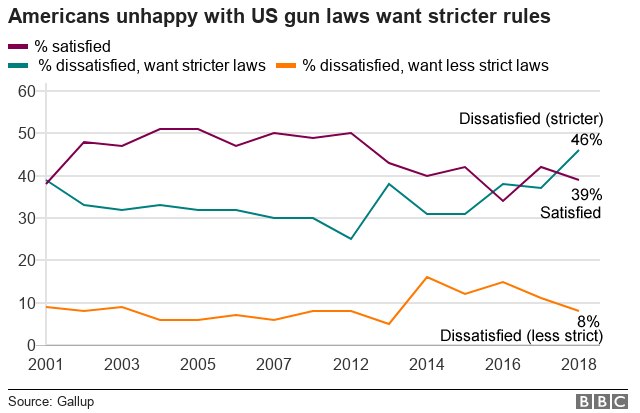
- Published24 March 2018
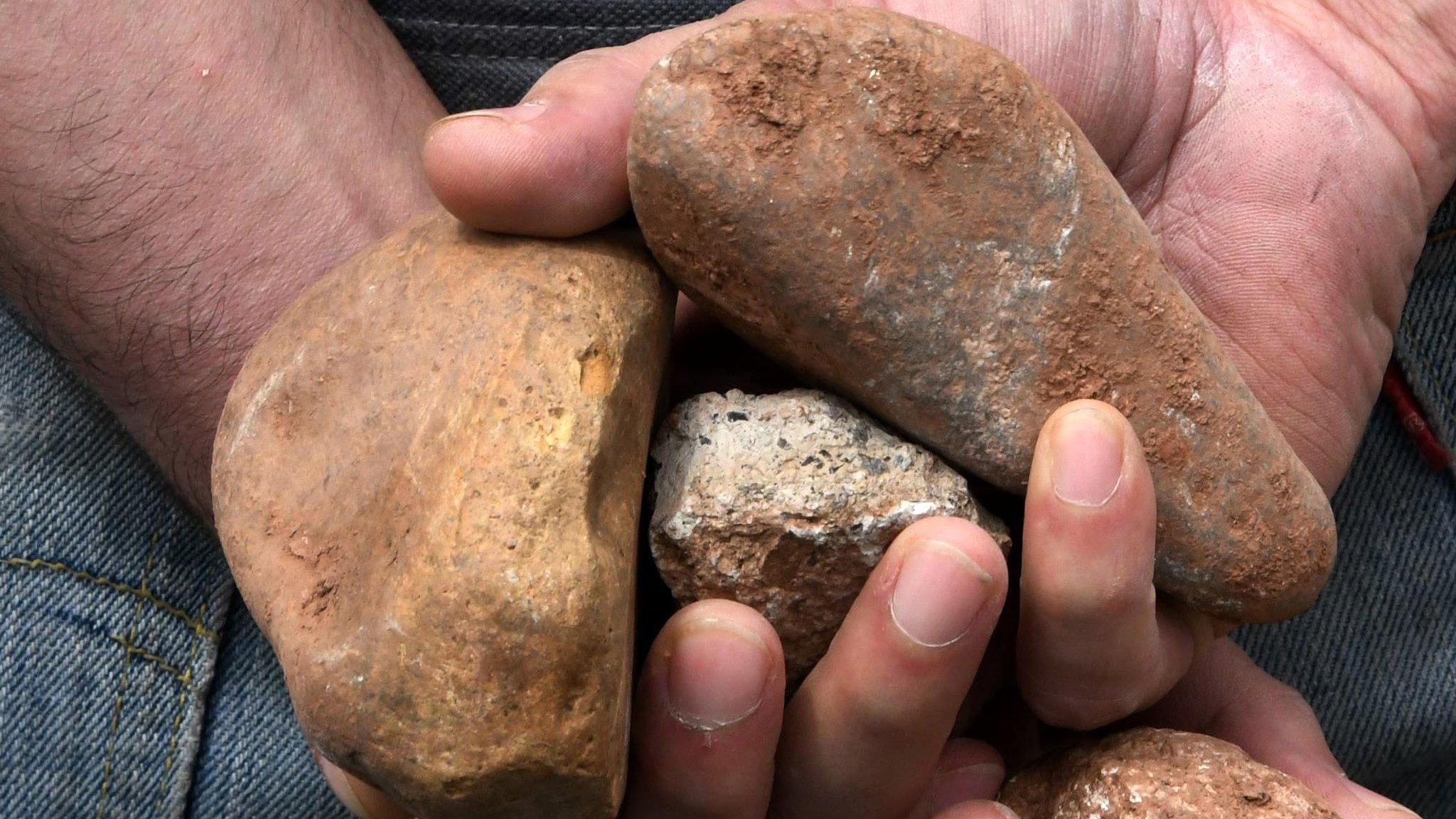
- Published24 March 2018
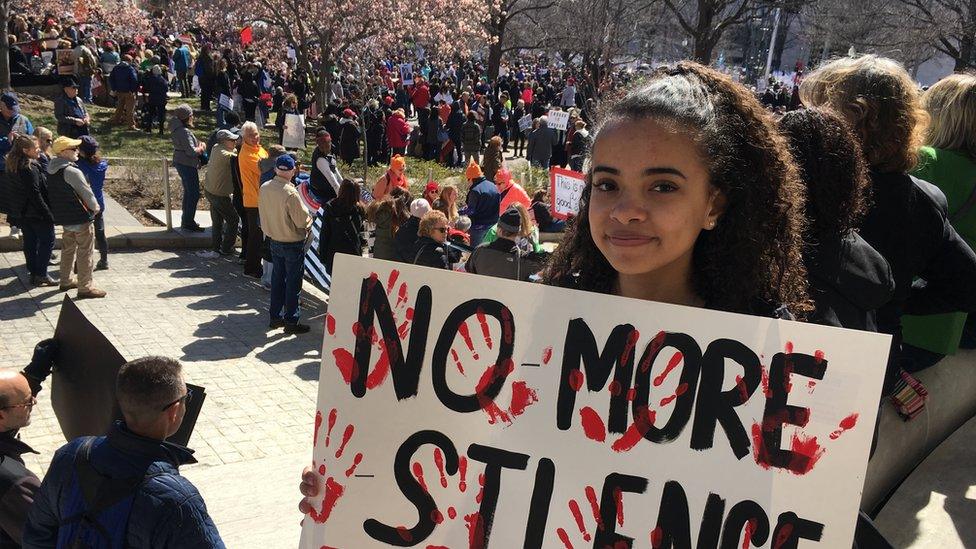
- Published22 March 2018
- Published24 March 2018
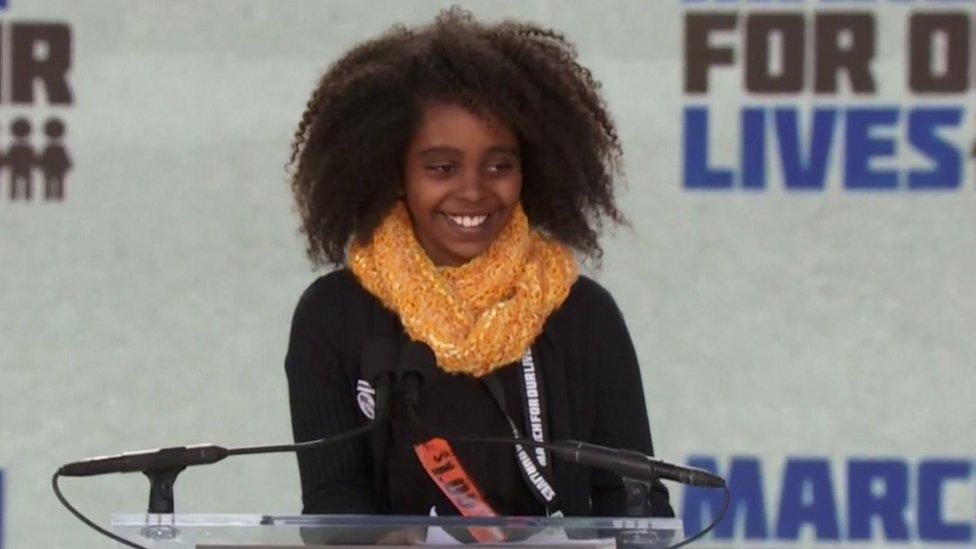
- Published17 December 2024
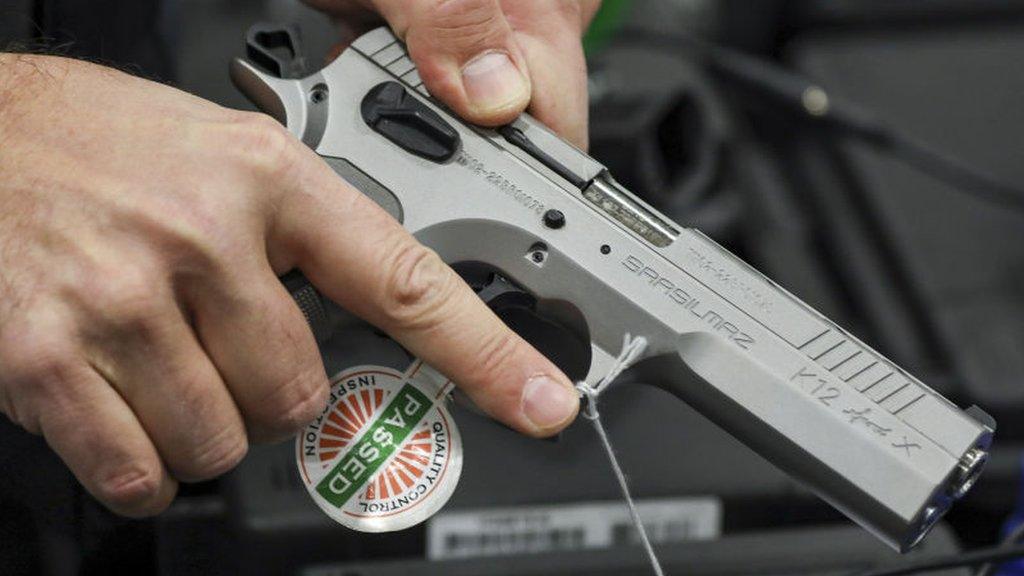
- Published24 March 2018
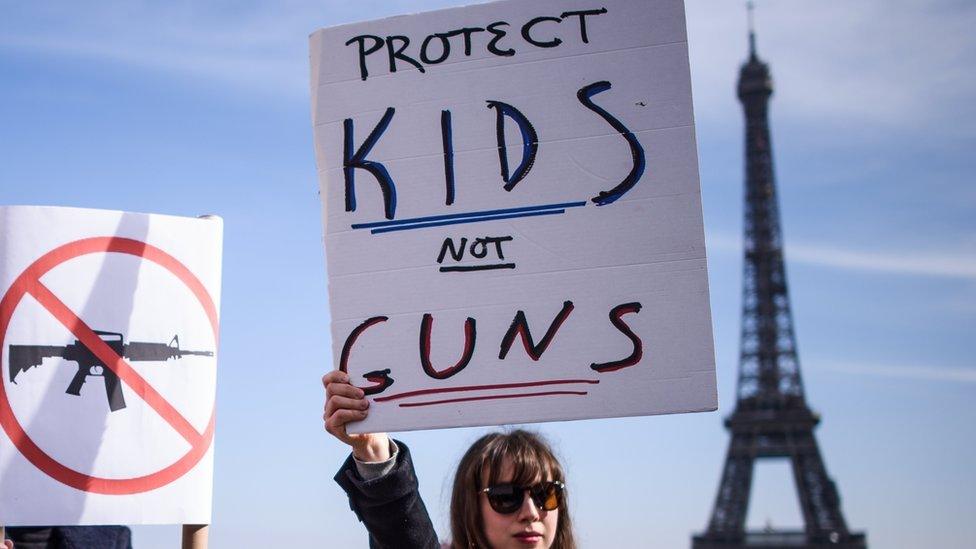
- Published14 March 2018
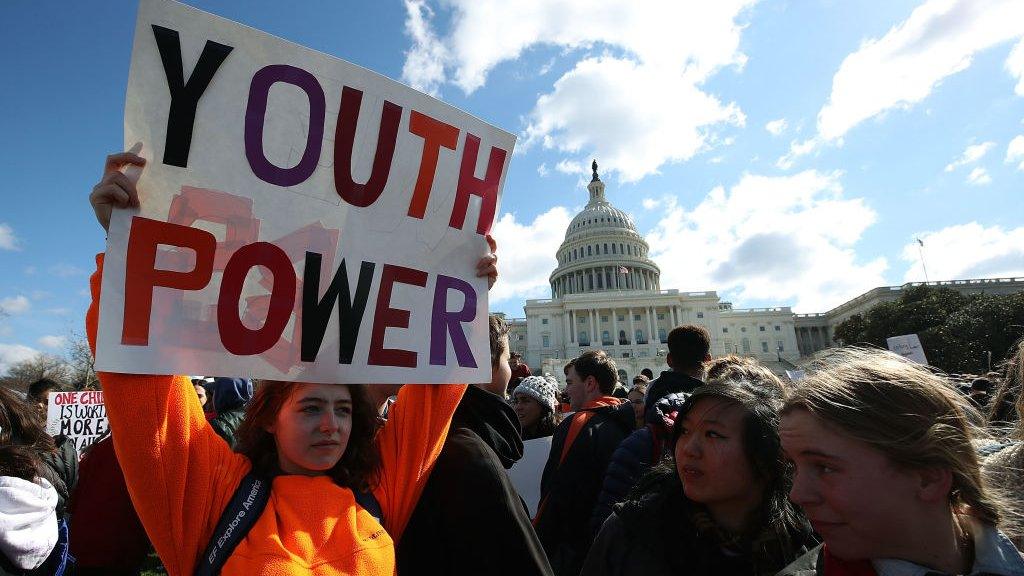
- Published12 March 2018
